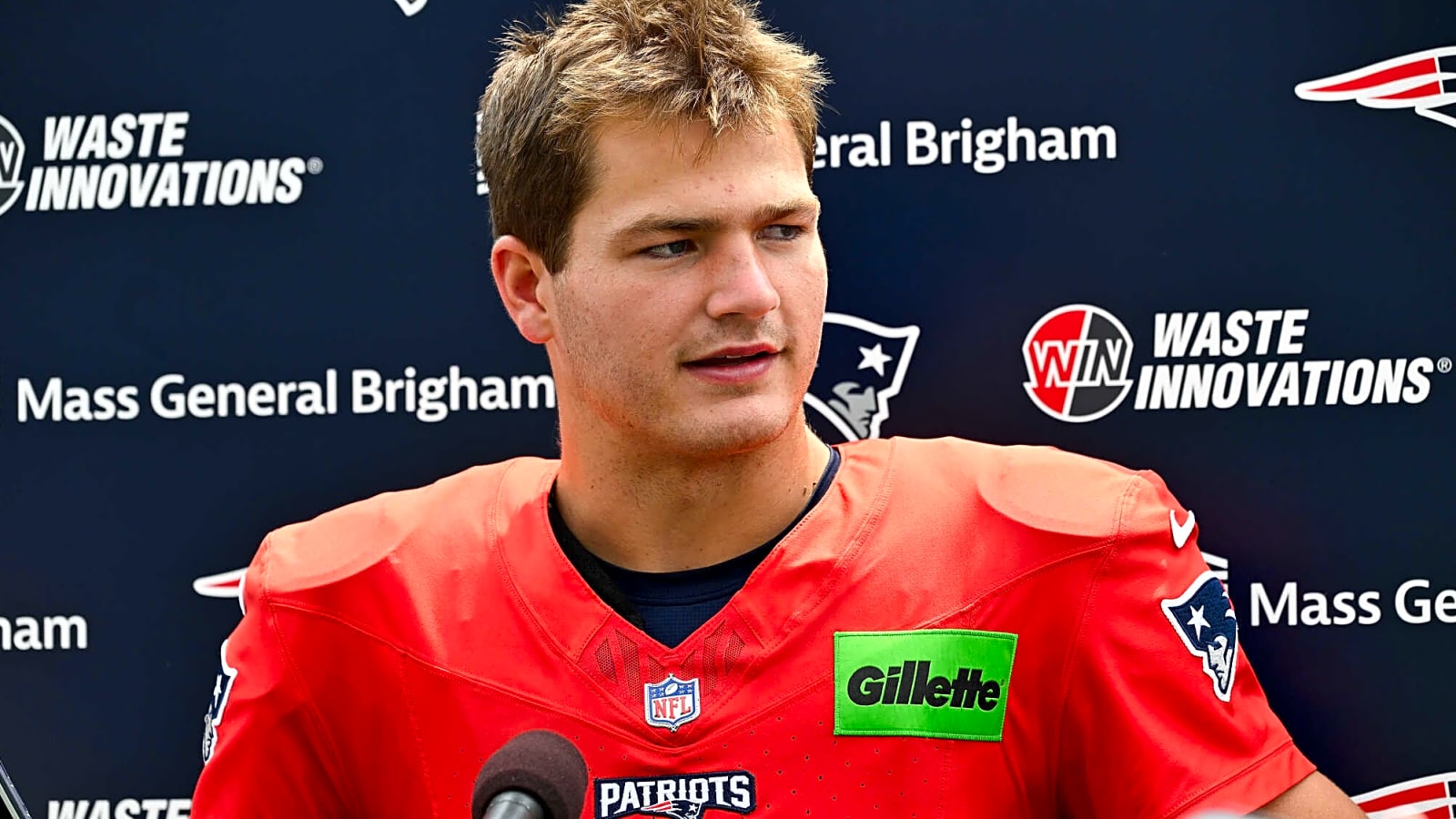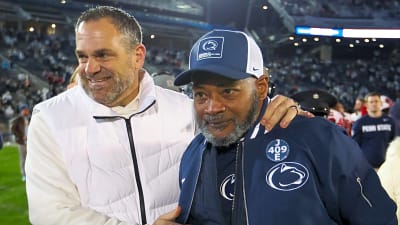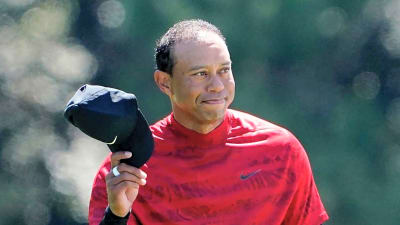
Drake Maye enters his second season as the face of the New England Patriots, looking to take the next step in his development.
After flashing his potential as a rookie in 2024, Maye quickly earned the trust of Patriots fans.
Now, with upgrades across both the roster and coaching staff, there’s a renewed sense of optimism in Foxborough. For the first time since Tom Brady’s departure, the Patriots feel like they’re building toward something meaningful.
New England is a playoff hopeful, but in a loaded AFC, they still have a long way to go before they can call themselves true contenders. For that to change, they’ll need to do everything possible to elevate their young quarterback.
One of the best ways to do that in Year 2 is to establish a consistent and efficient rushing attack.
The Run Game Fell Short in 2024
While the Patriots’ ground game wasn’t their biggest problem last season, it wasn’t reliable either— especially when they needed it most.
At first glance, the numbers were solid: New England finished 13th in both rushing yards (1,969) and yards per carry (4.4). But those figures don’t reflect how situationally unreliable the run game actually was.
The Patriots ranked 30th in rushing EPA and 29th in rushing success rate, two advanced metrics that better capture down-to-down effectiveness. In short, the run game didn’t help much when it came to staying on schedule or finishing drives.
That was evident in critical moments. They averaged just 2.2 yards per carry on third-and-short (29th in the NFL) and picked up first downs on just 22.6% of all rushes (27th).
The failure to convert in tight spaces bled into the team’s redzone success, where they ranked 30th in redzone touchdown percentage.
On first downs, the Patriots were 28th in rushing success rate, which often forced Maye and Jacoby Brissett into predictable passing situations behind one of the league’s worst offensive lines.
And to top it off, New England led the league in rushing fumbles, compounding an already inefficient ground attack with costly turnovers.
If the Patriots want to support Maye’s development in 2025, the run game needs to be a real asset. It has to be a consistent, situationally effective tool that keeps the offense on track.
McDaniels’ Track Record and the RB Committee
Josh McDaniels returns as the Patriots’ offensive coordinator with a reputation as a creative offensive mind. While much of his success is tied to Brady, his offenses consistently produced on the ground.
Across 13 seasons as New England’s OC, McDaniels led the offense to eight finishes in the top 10 of rushing yards, and they primarily did so without a traditional workhorse back.
The 2025 Patriots appear to be equipped for a similar committee approach:
- Rhamondre Stevenson is elite after contact, but needs to improve ball security.
- TreVeyon Henderson, a second-round rookie, brings burst and big-play potential.
- Antonio Gibson quietly emerged as an efficient dual-threat option in 2024.
The group doesn’t need to break any records, but it must be dependable— particularly in short-yardage and redzone scenarios where last year’s unit faltered.
The New England Patriots best running back is 2nd round pick TreVeyon Henderson. #NEPats
The Ohio State product will have a large role in the passing game based off of the way Josh McDaniels has utilized RBs in the past. A big season is in store. pic.twitter.com/9ql0DbvaOa
— Patriots Lead (@Patriots_Lead) August 3, 2025
Unlocking Maye’s Rushing Ability
While Patriots fans grew accustomed to Brady’s pocket-passing mastery, Maye’s mobility is too valuable to leave untapped.
In 2024, Maye averaged 7.8 yards per rush, second-highest in the NFL among players with over 20 carries. Most of that came on scrambles, where his size and athleticism allowed him to consistently break contain and punish defenses in space. But there’s untapped potential in designed runs as well.
Josh McDaniels leaned heavily into Cam Newton’s running ability in 2020 as he ran for 592 yards and 12 touchdowns. Maye isn’t the same runner as Newton — one of the greatest rushing QBs in NFL history — but McDaniels has proven he can adapt his playbook to fit a quarterback with athletic tools.
As Maye continues to develop as a processor, incorporating more movement-based concepts and designed runs can help manufacture offense, especially for a unit that currently lacks high-end explosiveness in the passing game.
The Run Game’s Ripple Effect
Despite the turmoil around him, Maye elevated the Patriots’ passing game down the stretch. From Weeks 6–17, New England ranked 16th in dropback success rate— a modest but encouraging sign given the lack of protection and playmakers.
Still, far too many drives were derailed by negative plays and tough down-and-distance situations. Without help from the run game, Maye was often forced to operate under duress behind a line that ranked 31st in pass-block win rate.
A stronger rushing attack would help control the pace, create cleaner passing downs, open up play-action, and reduce the mental and physical burden on Maye.
The Bottom Line
Drake Maye’s long-term success is ultimately in his hands, but the Patriots need to do their part in assisting his development. A more efficient and dependable run game would be massive for Maye, looking to take the next steps.
The rushing attack doesn’t need to be dominant. They should be just dangerous enough to keep defenses honest. Just consistent enough to stay out of third-and-long. Just opportunistic enough to finish drives in the red zone.
If the Patriots can establish that foundation, it’ll elevate their young quarterback and might finally reignite an offense that’s been stuck in neutral since Brady left.
More must-reads:
- Browns make massive Deshaun Watson move with Shedeur Sanders atop the depth chart
- Chargers QB Justin Herbert discusses injury recovery timeline heading into Week 14
- The 'Most passing + rushing TD games in a season' quiz
Breaking News
Trending News
Customize Your Newsletter
 +
+
Get the latest news and rumors, customized to your favorite sports and teams. Emailed daily. Always free!








